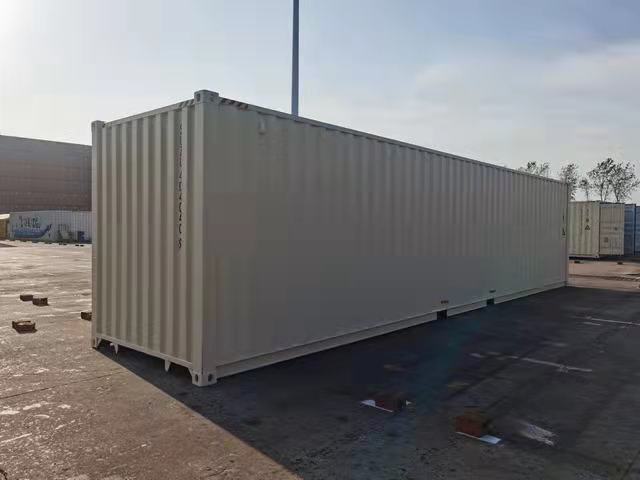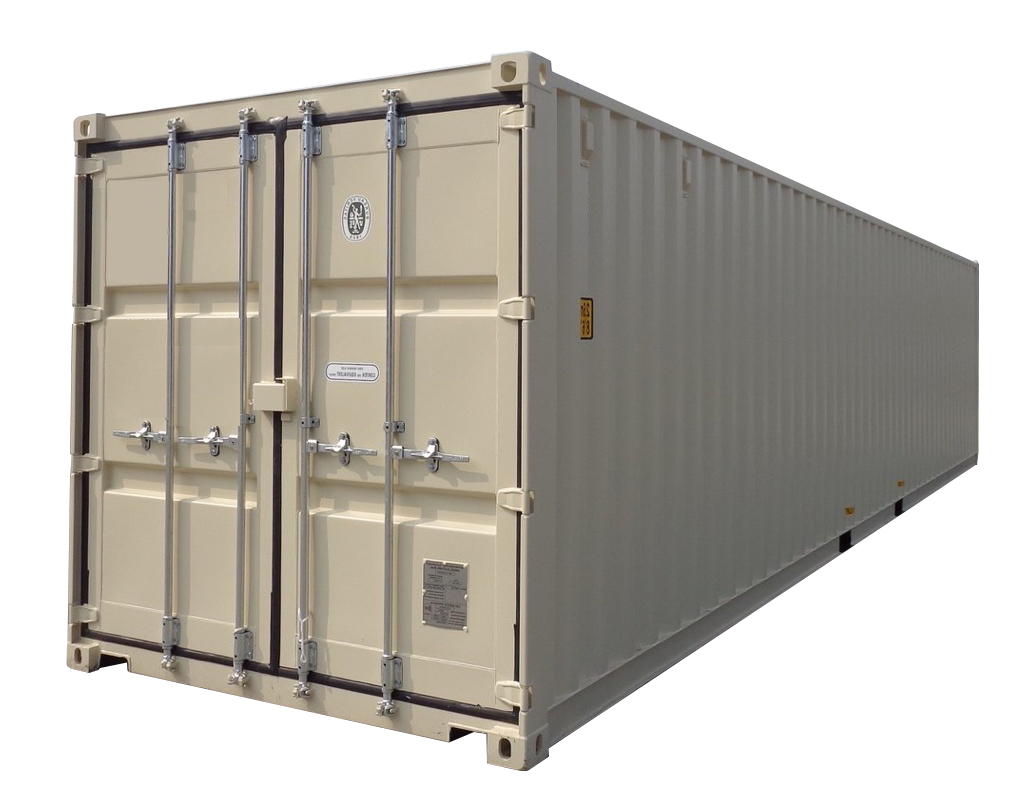Smart Entrepreneurs Are Choosing to Lease New Shipping Container 40 x 8 x 9.6—Here’s Why
Smart Entrepreneurs Are Choosing to Lease New Shipping Container 40 x 8 x 9.6—Here’s Why
Blog Article
The Ultimate Overview to Choosing the Right Shipping Container for Your Needs
When it comes to selecting the ideal delivery container, recognizing your certain requirements is necessary. You'll intend to take right into account variables like size, kind, and product to assure you make the very best selection. From standard dimensions to specialized choices, there's a lot to explore. And also, budgeting for both the container and any kind of modifications can make a big distinction. Allow's break down the vital aspects to help you discover the ideal suitable for your demands.
Understanding Shipping Container Sizes
When you're choosing a delivery container, understanding the numerous dimensions readily available is essential for making the best choice. Delivering containers generally come in basic sizes of 20 and 40 feet, however you'll also find various other dimensions. Understanding the dimension you need relies on what you prepare to shop or transport.If you're relocating smaller sized things, a 20-foot container could be optimal, while larger deliveries often need a 40-foot container. The elevation can likewise differ; high cube containers supply extra vertical room, which can be advantageous for taller goods.Before determining, measure your freight, and consider exactly how much space you'll need for packing and dumping. Constantly factor in prospective future demands-- selecting a somewhat bigger container may save you problem down the line. Inevitably, picking the best size will boost effectiveness and guarantee your items are safe and secure throughout transit
Kinds Of Delivery Containers Available
There are several types of shipping containers offered, each designed for particular objectives and freight demands. The basic dry container is functional, ideal for general cargo. If you're shipping subject to spoiling items, consider a chilled container, which keeps a controlled temperature level. For large products, high cube containers offer extra elevation, suiting taller loads.If you need to transport heavy equipment or tools, level rack containers supply a tough base without wall surfaces. Open-top containers enable for simple loading of tall freight, with a detachable tarpaulin covering for security. If you're looking for flexibility, think about a retractable container that can be easily kept when not in use.Lastly, specialized containers like tank containers are utilized for fluids, while vented containers are designed for bulk cargo that needs air flow. Recognizing your freight kind will aid you select the appropriate container to meet your delivery requires successfully.
Material Considerations for Sturdiness
When picking a shipping container, the material plays a crucial duty in its durability. You'll intend to consider the benefits of steel versus aluminum, particularly regarding rust resistance. Understanding these aspects can help you make a much more informed choice for your delivery needs.
Steel vs. Light weight aluminum Containers
How do you select between steel and aluminum containers for your delivery requires? Begin by taking into consideration durability. Steel containers are durable and offer exceptional toughness, making them optimal for hefty lots and severe conditions. They withstand damages from impacts and are typically less costly, which can be a significant factor for budget-conscious buyers.On the various other hand, aluminum containers are light-weight, which can conserve you on shipping expenses. They're simpler to maneuver and are a terrific selection if you need to transfer goods frequently. Light weight aluminum is generally extra pricey and less robust than steel. Weigh your specific needs meticulously, consisting of weight, price, and the kind of cargo you'll be shipping, to make the appropriate option for your scenario.
Rust Resistance Variables
Selecting the appropriate material does not just entail weight and expense; corrosion resistance plays a significant role in toughness. When selecting a delivery container, consider the setting it'll face. Steel containers, while solid, can corrosion if not appropriately dealt with. Search for alternatives with protective coatings or galvanization to boost their life-span. Light weight aluminum, on the other hand, offers all-natural corrosion resistance, making it suitable for seaside locations or damp conditions. It can be more pricey. Furthermore, analyze the container's use-- if it'll be subjected to chemicals or harsh weather, prioritize materials that can endure these problems. Buying a corrosion-resistant container now can save you from pricey repairs or substitutes down the line. Select intelligently for lasting benefits.
Alterations and Modification Options
Shipping containers aren't just for carrying products; they can be changed to fulfill your certain needs through various modifications and personalization alternatives. You can transform a typical container into a comfortable workplace space, a momentary retail store, or even an individual health club. The possibilities are virtually endless.Think about including home windows, insulation, or air flow to enhance convenience. You could likewise take into consideration electric wiring, plumbing, and even customized shelving to improve performance. If safety's a concern, reinforced locks can offer tranquility of mind.For aesthetic charm, you can paint the container or include an one-of-a-kind style to make it attract attention. Don't ignore flooring alternatives-- whether you desire durable plywood or something more innovative, it can boost the space.Ultimately, tailoring your shipping container to suit your demands can boost use and create an unique environment that mirrors your design.
Analyzing Your Transport Requirements
When it comes to using your customized delivery container, recognizing your transportation needs is crucial. Begin by determining what pop over here you'll be shipping-- whether it's heavy devices, retail goods, or personal things. Each sort of freight has different demands pertaining to size, weight, and accessibility.Next, take into consideration the range and mode of transport. Are you shipping locally, nationally, or internationally? This influences the container's layout and functionality. If you're utilizing vehicles, ensure your container fits basic dimensions for simple loading and unloading.Additionally, think regarding transportation conditions. Will your items require unique defense from climate or temperature fluctuations? If so, you may need insulation or air flow features in your container.Lastly, examine how commonly you'll be transporting products. Frequent deliveries might call for a more durable and flexible container to meet recurring needs. By dealing with these factors, you'll be well-prepared to pick the appropriate shipping container for your needs.
Budgeting for Your Delivery Container
Setting a budget plan for your delivery container is essential for ensuring a smooth buying process. First, establish how much you can manage to invest. Maintain in mind that prices can vary considerably based upon size, problem, and kind. New containers typically set you back extra, yet made use of ones can supply considerable savings.Next, take into consideration any type of additional costs you could sustain, such as transport fees, distribution costs, and modifications. If you prepare to personalize find here the container, consider those costs too. Research study various providers to contrast prices and find the very best bargain that fulfills your needs.Don' t forget to include any licenses or laws that might relate to your purchase and use the container. By clearly outlining your budget, you'll be better prepared to make educated choices, guaranteeing you obtain the right container without breaking the bank.
Maintenance and Treatment for Longevity
To assure your delivery container lasts for many years, normal maintenance is key. Begin by inspecting the exterior for rust, damages, and damages. If you find any kind of issues, address them quickly to stop further wear and tear. Clean the container regularly, both within and out, to get rid of dust, debris, and dampness that can bring about corrosion.Ensure the doors secure correctly and oil the joints to avoid rust and sticking. If you're making use of the container for storage space, take into consideration including air flow to decrease moisture and mold development. For additional defense, use a rust-inhibiting paint or sealer annually.If your container's situated in an extreme atmosphere, like seaside areas, you may require to increase upkeep regularity. Maintain an eye on the flooring, too; any kind of indicators of wear need to be fixed as soon as possible. With these basic steps, you'll extend the life of your shipping container considerably.
Frequently Asked Inquiries
Just how Do I Discover a Dependable Delivery Container Vendor?
To find a trusted delivery container distributor, start by researching on-line reviews, asking for recommendations from close friends or market get in touches with, and comparing costs. Always inspect their credentials and assurance they offer quality containers that fulfill your needs.

Can I Rent a Shipping Container Rather Than Buying?
Yes, you can certainly rent out a delivery container rather than getting one. Many click for info suppliers offer rental options, which can save you money and offer adaptability if you only require it for a short duration.
What Permits Are Needed for Container Placement?

Are Shipping Containers Weatherproof and Ideal for Outdoor Storage?
Yes, delivering containers are normally weatherproof, designed to hold up against harsh conditions. Their robust building and construction maintains your items secure and completely dry, making them appropriate for outside storage. Just ensure proper ventilation to prevent dampness buildup inside.
How Do I Carry a Shipping Container When Bought?

Report this page